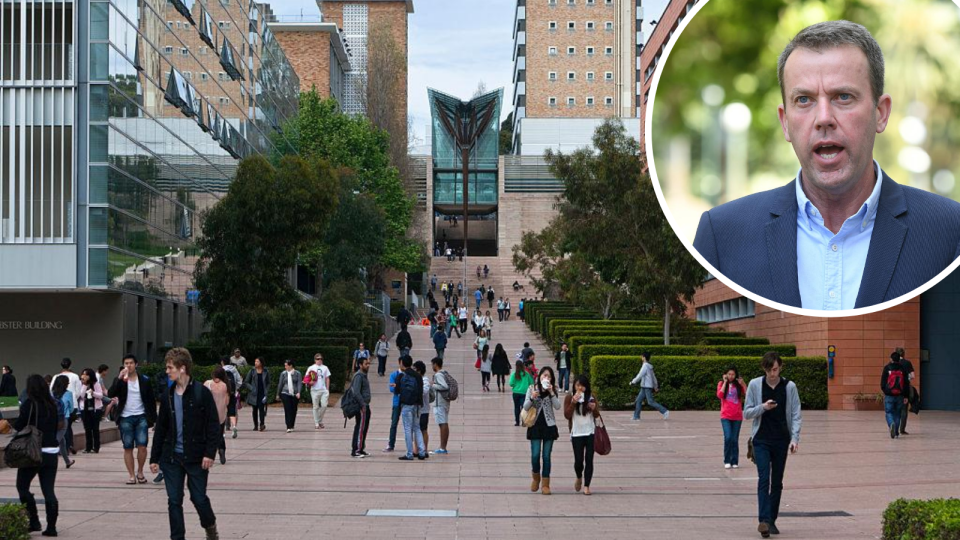Government accused of stripping $900m from universities

The Federal Government’s major plans to overhaul the education sector by doubling the prices of some degrees while bringing down the prices of others will see funding to the higher education sector slashed by $900 million, new analysis has revealed.
On 19 June, Education Minister Dan Tehan proposed the Job-ready Graduates Package designed to encourage students to select university courses in areas that need workers and will stimulate economic recovery.
The package sees the cost of humanities degrees rise more than 113 per cent, while students opting to study agriculture, maths degrees or STEM degrees will pay up to 62 per cent less.
University degrees are partly funded by the Commonwealth and partly funded by students. While the package sees more Commonwealth funding for some courses, it’s pulling funding from others – meaning some students will pay less to study courses the Government favours, while other students will have to pay more.
But if the proposal goes ahead, the Government will be reducing investment into the university sector by $1.7 billion, according to analysis by the Bankwest Curtin Economics Centre.
Students are expected to contribute more than $800 million – but this still leaves an overall shortfall to the tune of $900 million.
“Most courses will have lower total funding overall relative to current median costs, with the exception of Medicine and Agriculture,” wrote BCEC research fellows Rebecca Cassells and Steven Bond-Smith.
For instance, medicine would receive funding of $9,474 more than it actually costs to deliver a typical course, compared to $7,248 previously.
And where the government has pulled funding, students are expected to fork out more – and those wanting to study arts have it toughest of all.
“Student contributions have increased substantially for a number of courses. This includes the Society and Culture disciplines, which comprise of Law and Economics, History and Sociology and Philosophy and History.”
Reform ‘inconsistent with the Government’s stated intentions’
The analysis also found that the proposals were ineffective in achieving the government’s own goals of incentivising students to “make more job-relevant decisions about their education”.
But funnelling students into mathematics, science and technology degrees while slashing funding for arts courses misses the mark, the BCEC researchers said.
“While productivity growth is often thought to be related to STEM fields, the greatest areas of employment growth have been and will likely continue to be in jobs which are difficult to automate,” wrote Cassells and Bond-Smith.
“These occupations typically require more interpersonal skills, which may be more supported by courses in Society and Culture. Such skills are also more transferable when jobs and tasks are disrupted by automation.”
“This change is therefore inconsistent with the government’s stated intentions.”
Not only that, but training students up for certain professions may not go far enough. For example, skills shortages in the nursing sector won’t be fixed by just lower courses.
“The sector faces significant worker retention problems, which require policy to be focussed on employment conditions in order to resolve current and future skill shortages.”
Women hit harder
The proposed overhaul will also be more costly for female students than male students, the BCEC researchers said.
For society and culture courses, the rise in student contributions will be $7,696, the highest of all course fields – but women make up two thirds of enrolments. The story is similar for other disciplines with high female enrolment, such as nursing and clinical psychology.
“Both have more than 80 per cent women, and both facing a proposed decrease in student contributions of $3,104.”

Meanwhile, fields that are more male-dominated will see decreased student contributions.
“IT and Engineering are both more than 80 per cent male and Architecture and building is more than 60 per cent male. These three fields have a proposed decrease in the student contribution of $1,998 per year.”
Make your money work with Yahoo Finance’s daily newsletter. Sign up here and stay on top of the latest money, economy, property and work news.
Follow Yahoo Finance Australia on Facebook, Twitter, Instagram and LinkedIn.

 Yahoo Finance
Yahoo Finance 
